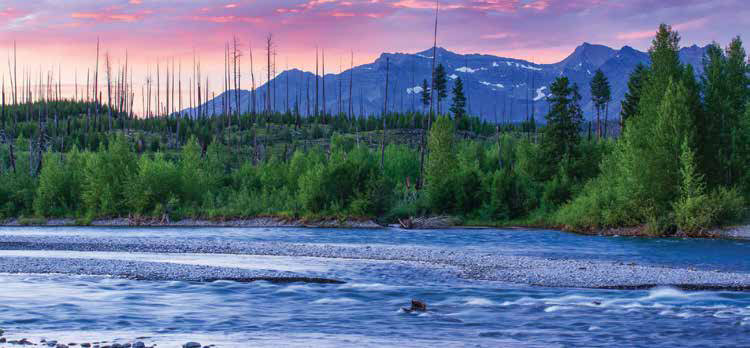
A few days ago, the National Parks Conservation Association released their Summer 2017 Field Report for the Northern Rockies. In it was an article by Michael Jamison, Crown of the Continent Program Manager, that is highly relevant to the North Fork, as well as any other region downstream of the Canadian Rockies. By permission of the author, it is reprinted here in its entirety . . .
People tend to think Glacier National Park is all about mountains.
And people are wrong.
Glacier is also about water: icy cold water rushing clean and clear across gravel and stone; whitewater plunging over cliff-band falls; sky-blue water eddying into lakes set like sapphires into the deep green of wilderness.
From the summit of the park’s Triple Divide Peak, meltwater flows west to the Pacific, east to the Atlantic, north to the Arctic by way of Hudson Bay. Glacier is water tower to a continent, spiked by peaks sharpened on a grindstone of Pleistocene ice.
I recently flew north out of Glacier, over a long slice of Alaska—another place branded by its mountains. Chugach. Wrangell-St. Elias. The Aleutians and Brooks and Chilkats.
But Alaska, like Glacier, is not really about mountains.
What I saw unfolding below was, again, a wild country defined by water: an endless winding coastline; miles of muskeg pooling like quicksilver; rivers washing the feet of mountains, slicing tundra and stone, spilling sediment braids into an ocean the color of steel.
Montana and Alaska are alike in this way. They also share a common headwater: British Columbia.
Continue reading Glacier’s headwaters: Water tower to our continent